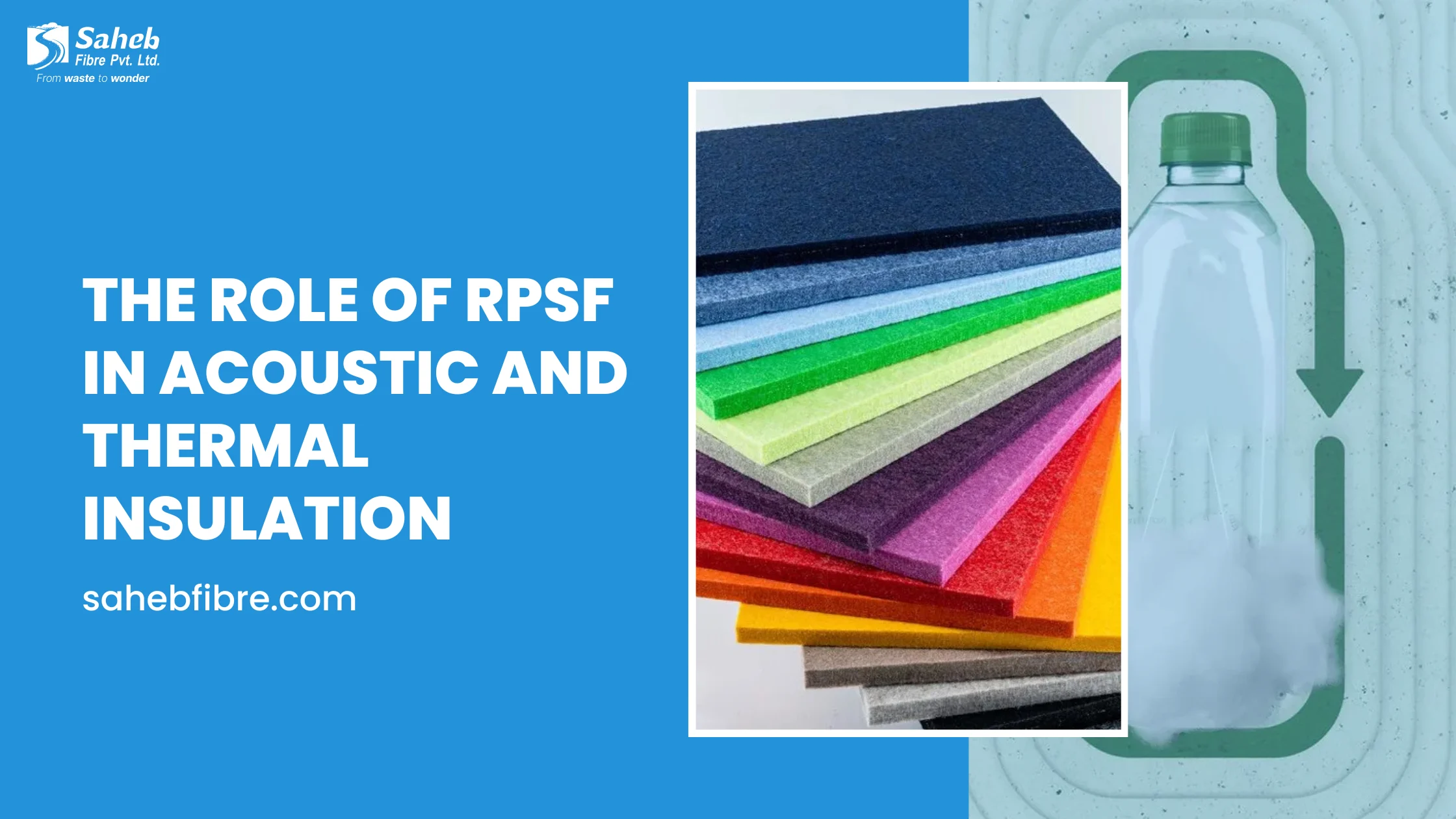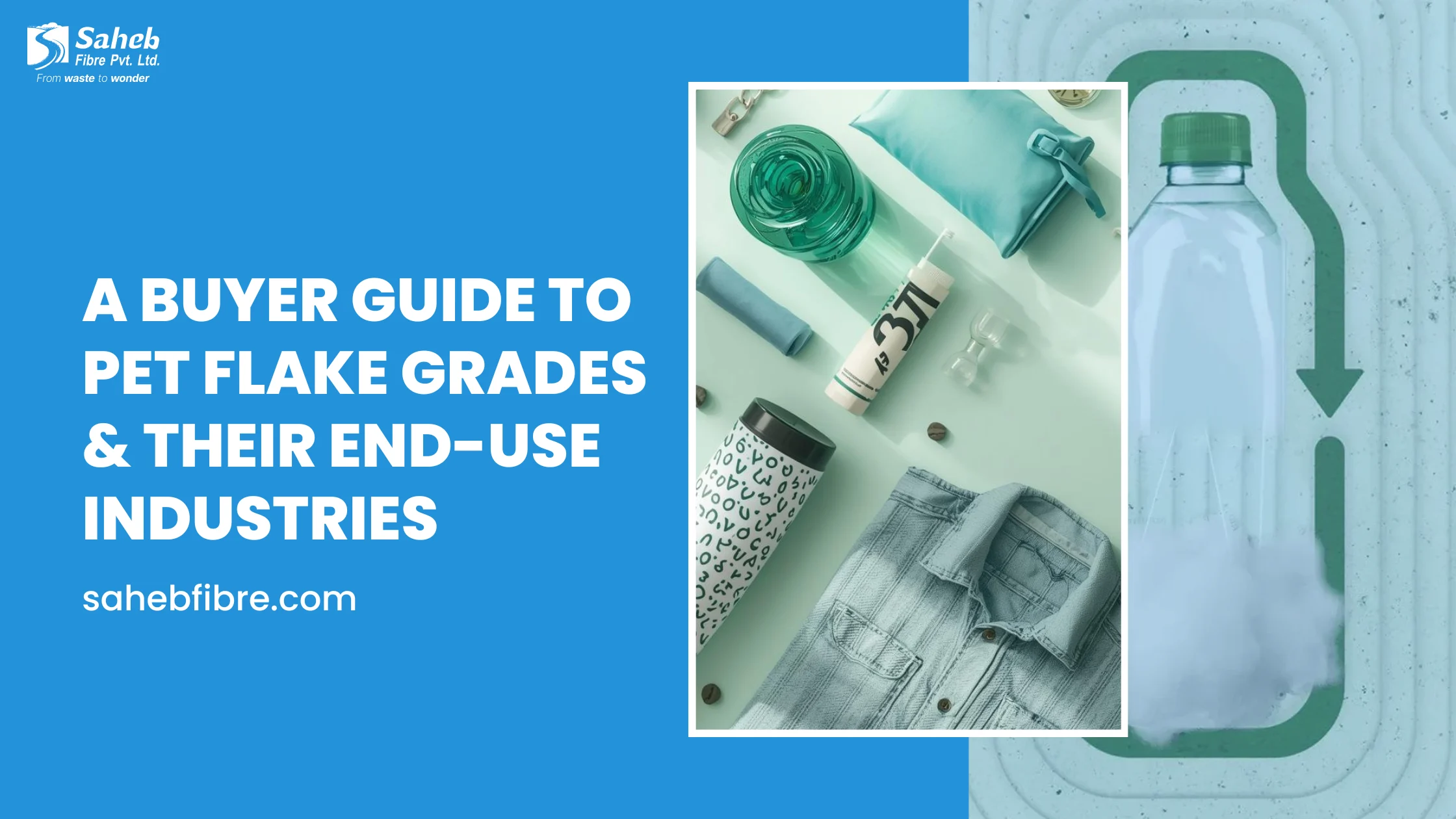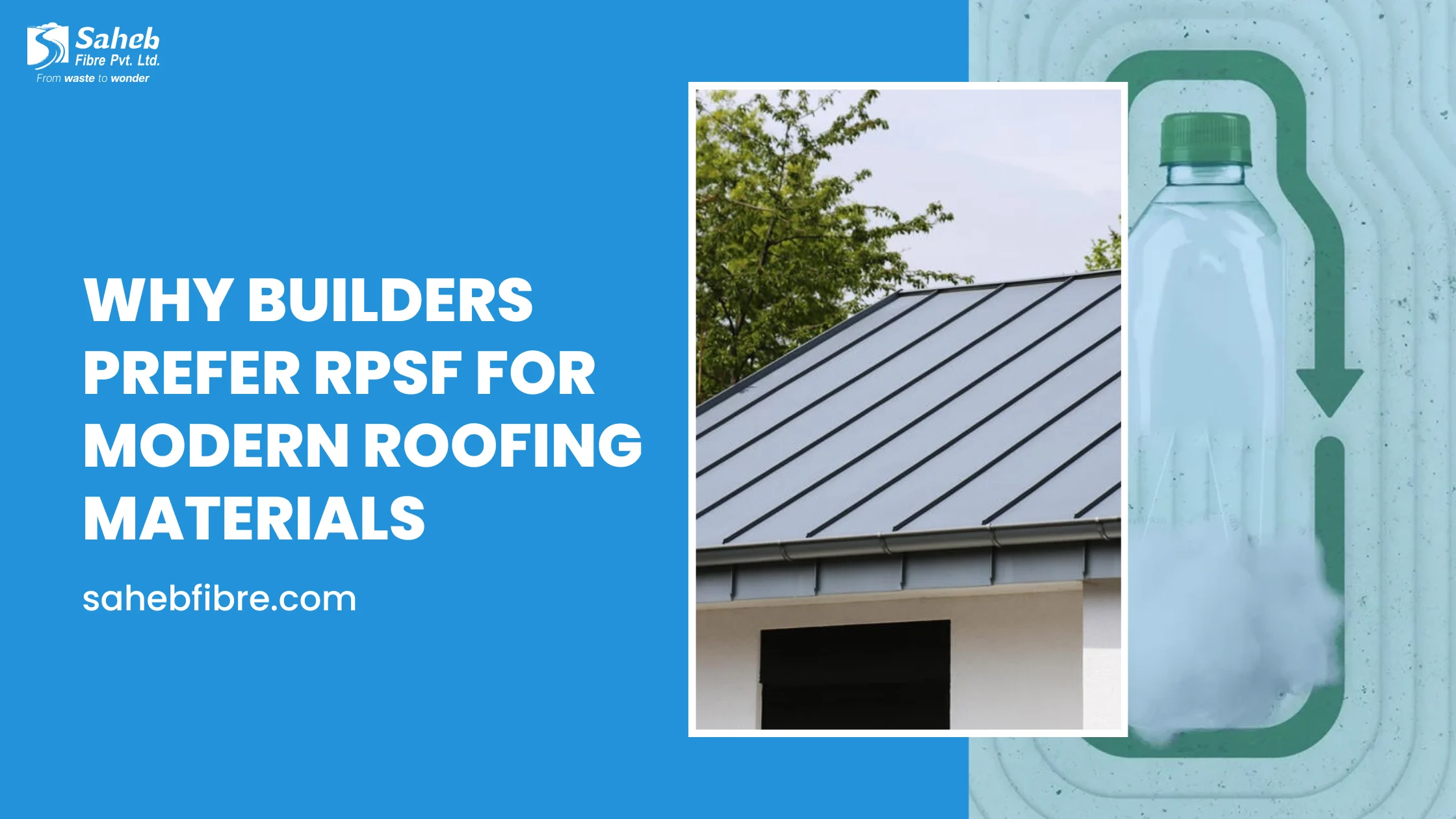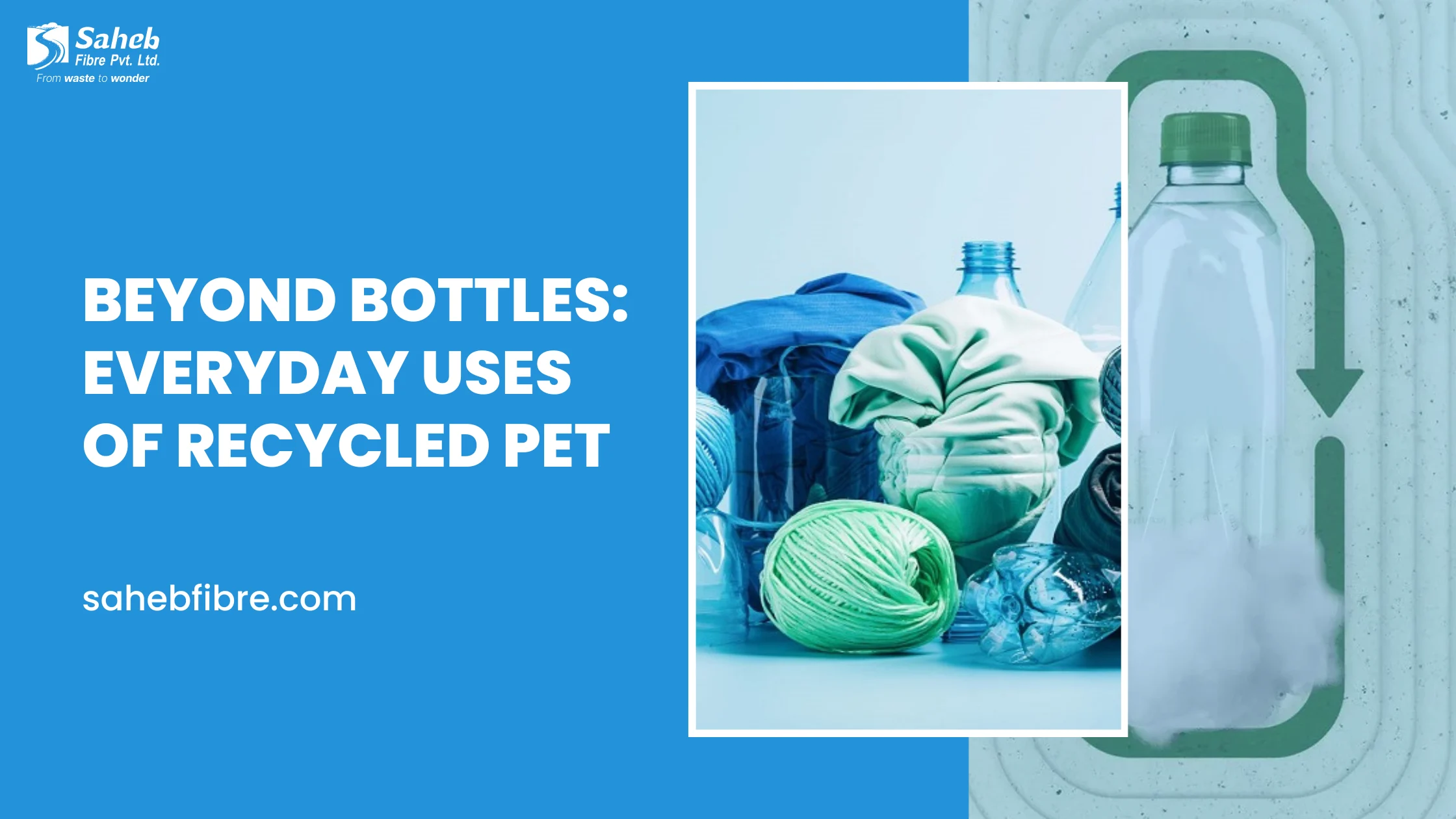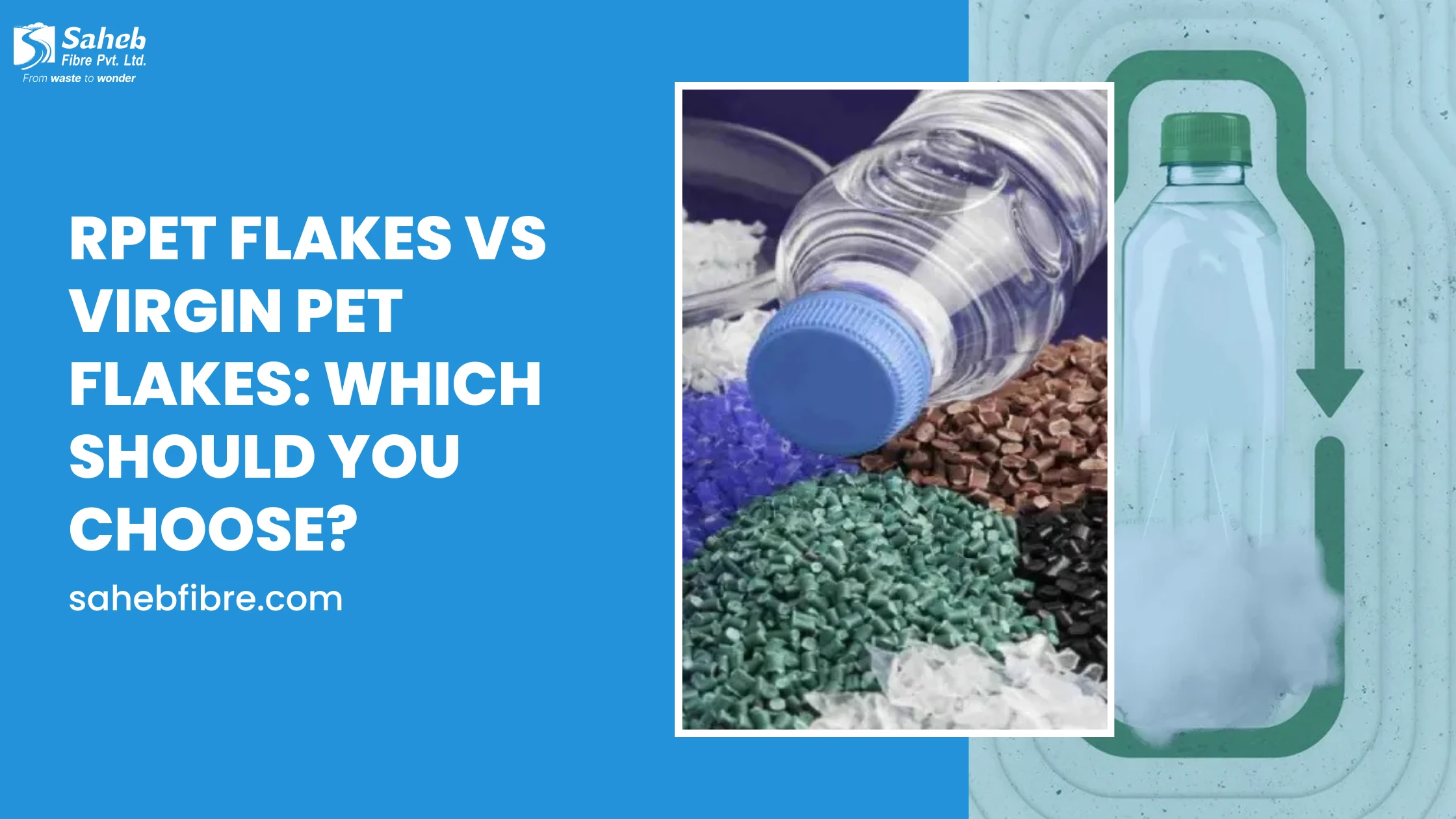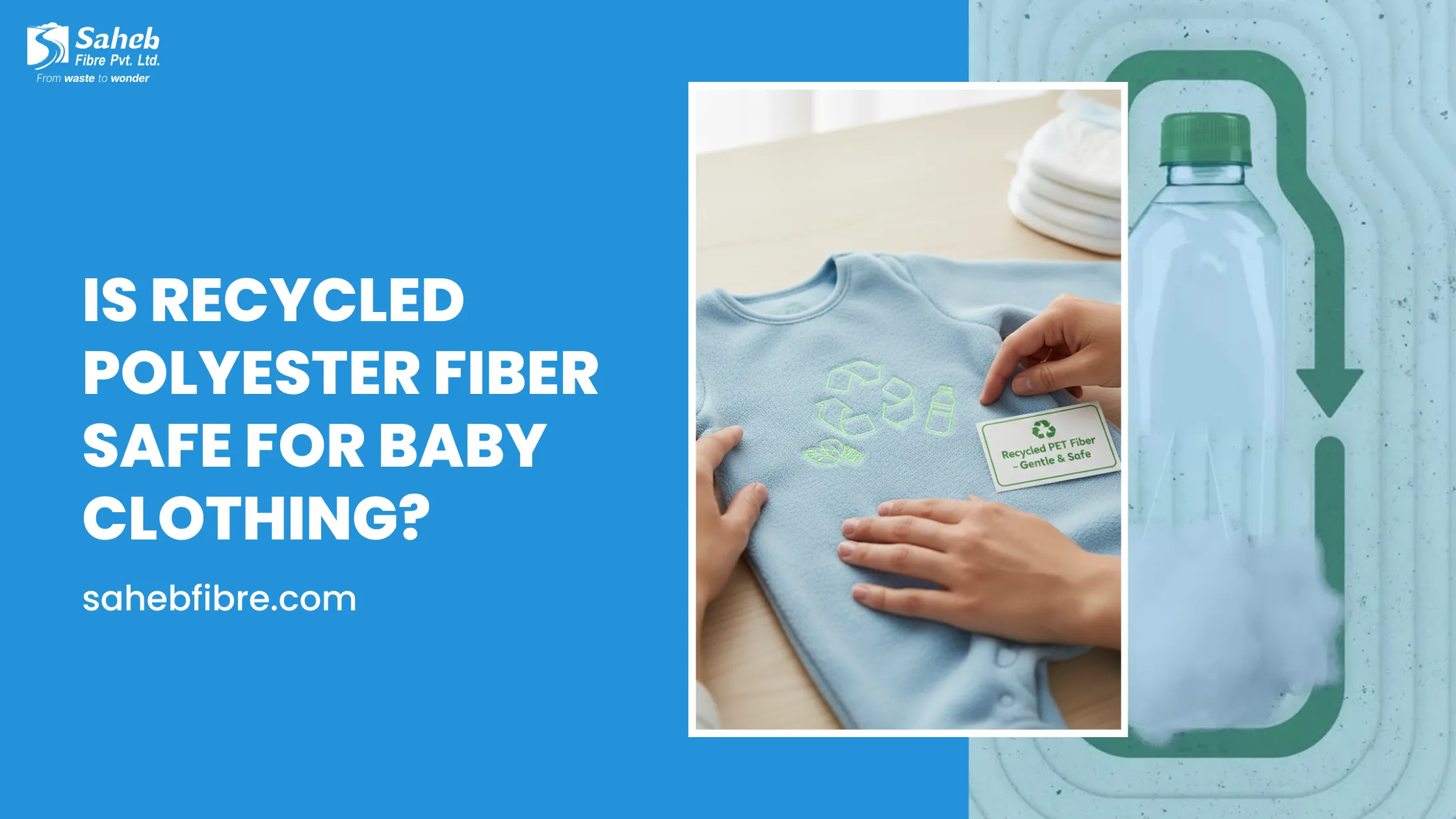
Usually yes, With some clear caveats. Recycled polyester (rPET) can make safe baby clothes. But safety depends on how the fabric was made, finished, and tested.
What is recycled polyester (rPET)?
Recycled polyester usually comes from plastic bottles or factory scraps. The plastic is cleaned and turned back into polyester fiber. Chemically, rPET is the same polymer as virgin PET polyester. It behaves the same in a fabric. Textile Exchange.
That matters. If a chemical is a risk in regular polyester, it may also be a risk in rPET. At the same time, rPET can reduce waste and use less energy than making brand-new polyester. But the safety question depends on how the material was processed and finished.
Main safety concerns for baby clothing
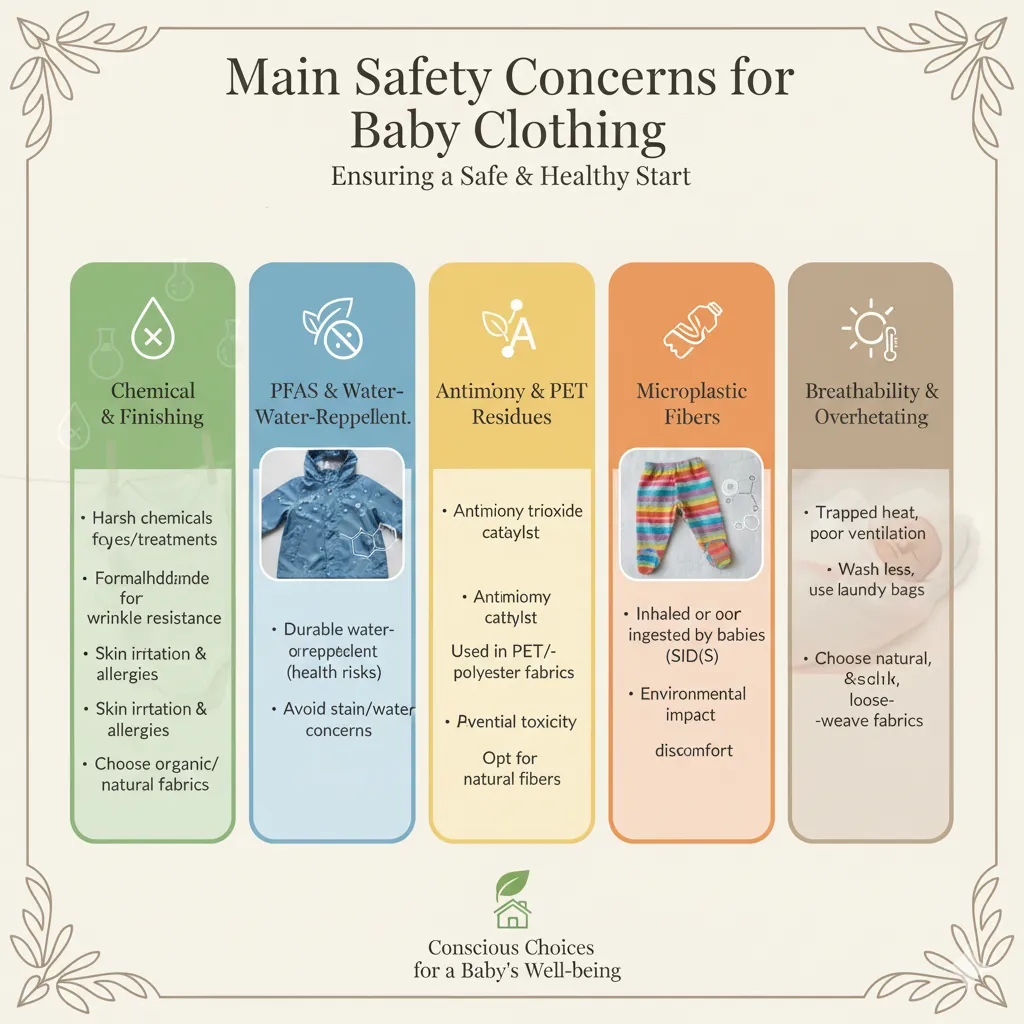
Chemical residues and finishing
Recycled material comes from used plastics. That means chemicals used earlier in the bottle or product could end up in the feedstock. Proper recycling removes most contaminants. But dyes, fixatives, and finishing chemicals are often added after recycling. Those can include substances parents worry about.
There are labs and standards that test for harmful residues. Look for fabrics certified to those standards (I’ll list them below).
PFAS and water-repellent finishes
Some clothes get water- or stain-repellent finishes. Those finishes can contain PFAS the so-called “forever chemicals.” Studies have found PFAS in many textiles, and pressure to ban or restrict PFAS in clothing is growing. PFAS are persistent in the body and environment, and some types are linked to health risks. If a baby’s clothing is treated with PFAS, that is a reason to avoid it.
Antimony and residues from PET
Antimony compounds have been used as catalysts in PET production. Some studies have shown antimony can leach from PET under certain conditions (for example, from bottles into liquids). That has raised questions about antimony in PET-derived products. The risk from clothing is not the same as from ingesting a liquid, but it is a possible contamination pathway to be aware of.
Microplastic fibers
All polyester sheds tiny fibers when it is washed or stressed. Those microfibers go into wastewater and the environment. Washing can release millions of tiny fibers from a single garment. Babies mouth things. They crawl on carpets and put fabrics in their mouths. So microfiber exposure is a real concern, even if the long-term health effects are not fully known yet.
Breathability and overheating
Polyester is less breathable than cotton. Babies have a harder time regulating body heat. That means polyester layers can make a baby sweat or overheat. This is a practical safety issue, not a chemical one. For hot weather or active babies, natural fibers often feel safer and more comfortable.
What the science and testing bodies say
There are standards that test textiles for harmful substances. OEKO-TEX Standard 100 is one of the best-known. It tests fabrics for hundreds of chemicals. A label means the item passed those tests. That does not make a garment completely risk-free. But it does reduce the chance of some toxins being present above tested limits.
There is also the Global Recycled Standard (GRS) and the Recycled Claim Standard (RCS). These focus on traceability and environmental practices, and they include checks on chemical management in processing. They don’t test every possible chemical, but they do hold manufacturers to clearer standards.
Regulators are watching PFAS, and some places are already banning PFAS in textiles. That matters because treated clothing may carry those chemicals. If you live where rules are changing, some brands will move away from PFAS by design.
Practical buying tips
-
Choose certified items. Look for Oeko-Tex, GRS, or bluesign®.
-
Read the label for fabric placement. If rPET is in an outer layer or jacket, it's less of an issue than for next-to-skin pieces.
-
Pick blends carefully. A small percentage of polyester in a cotton blend can add durability while keeping breathability.
-
Avoid treated fabrics for sleepwear. If you can, skip flame-retardant finishes or ask if the item is naturally flame resistant.
-
If the baby has eczema, err on the side of natural fibers. Organic cotton is a safer next-to-skin choice for sensitive skin.
-
Check brand transparency. Brands that publish testing reports or material sources are easier to trust.
How to reduce risks at home
-
Pre-wash new clothes. Wash items before first wear. That helps remove surface residues.
-
Wash cold and gentle. Lower temperatures reduce fiber shedding. Use a mild detergent.
-
Use a microfiber-catching laundry bag or filter. These can capture some loose fibers.
-
Avoid over-drying. Tumble drying can increase fabric wear. Air-dry when possible.
-
Full loads, but gentle cycles. Full loads reduce friction per item, which lowers shedding.
-
Avoid strong fabric softeners and perfumes. These add chemicals to fabric and can irritate sensitive skin.
-
Spot-test for skin reactions. Put a small piece of fabric against the baby’s inner arm for a few hours to see if redness appears.
When recycled polyester makes sense for baby clothes
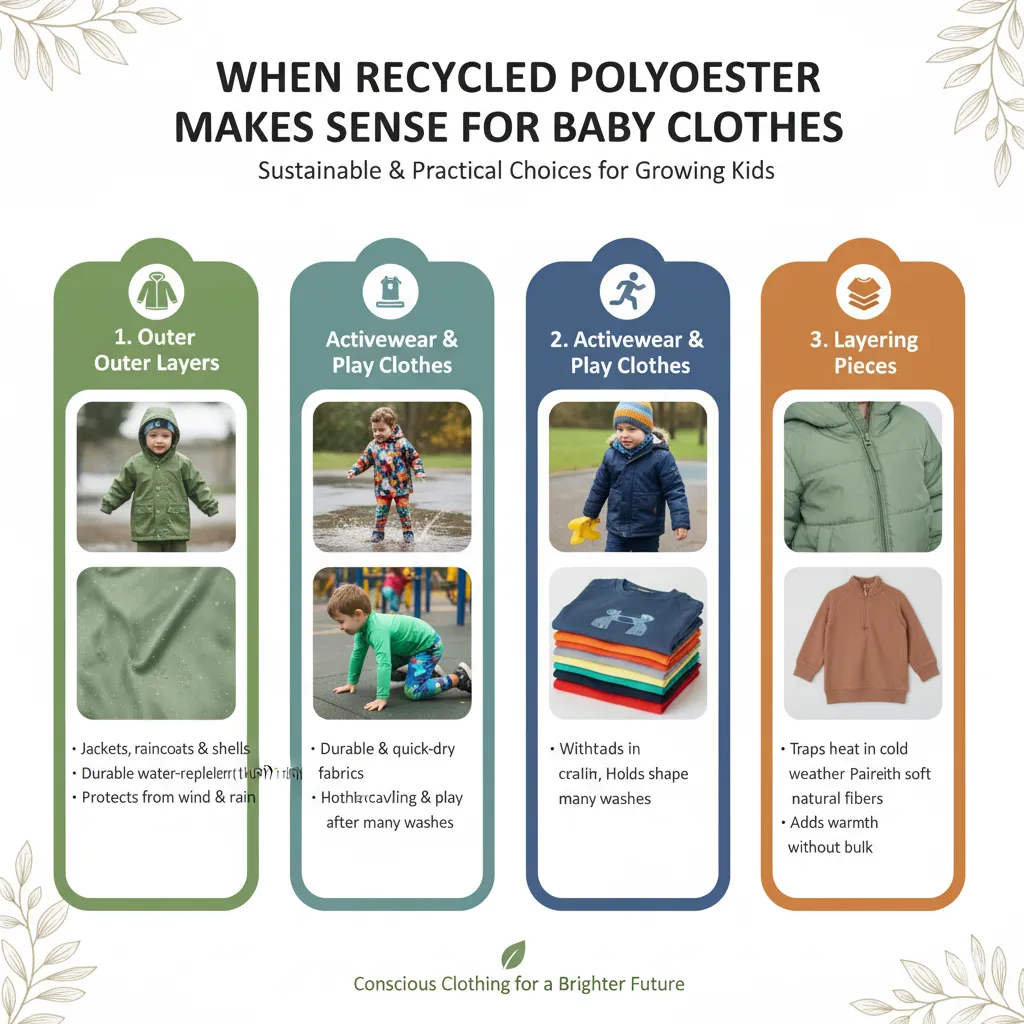
-
Outer layers: Jackets, raincoats, and outer shells are good candidates. They don’t sit directly against delicate skin all day.
-
Activewear and play clothes: Durable and quick-dry fabrics hold up when kids crawl and play.
-
Items you need to wash often: rPET handles many washes without losing shape, so for heavily-used items it’s practical.
-
Layering pieces: For cold weather, synthetic layers can help trap heat when paired with a soft natural fiber next to the skin.
The bottom line my plain answer
Recycled polyester is not automatically unsafe for baby clothes. The risk depends on processing, finishing, and the specific chemicals used. If the fabric is tested and certified, and it has no PFAS or harmful finishes, rPET can be a reasonable choice for many garments. But for close-to-skin layers for newborns, natural fibers are often a simpler, lower-risk option.
Use certifications as a shortcut. Wash new clothes. Skip treated or coated fabrics for babies. And reduce microfiber pollution where you can. Those steps will lower most of the likely risks.
At Saheb Fibre, we are committed to delivering high-quality recycled polyester staple fiber (RPSF) that meets global benchmarks, ensuring it is suitable for sensitive applications like baby clothing. With the right manufacturing practices, recycled polyester can indeed be a safe, sustainable, and future-ready choice for the next generation.
